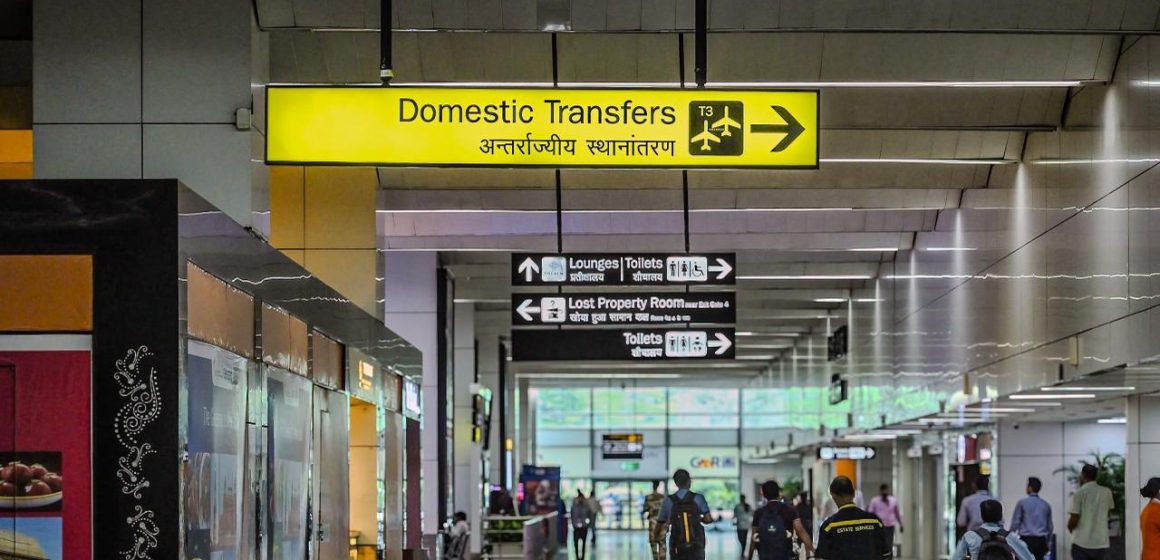In the 12 months from September 2024 to August 2025, Delhi Airport handled over 670,000 East-West-East international transit passengers, a 34 per cent YoY increase from 498,000 during the corresponding period.
Delhi’s Indira Gandhi International Airport has reinforced its position as a global transit hub, handling over 670,000 East-West-East international transit passengers between September 2024 and August 2025, a 34 per cent YoY increase from 498,000 in the previous period. East-to-West traffic rose 34 per cent, while West-to-East traffic grew 35 per cent, highlighting Delhi’s growing relevance as a preferred international transfer point between Asia and Europe.
Among the airlines driving this growth, Air India accounted for 67 per cent of East-to-West transit traffic, followed by IndiGo with 25 per cent, according to the International Air Transport Association (IATA) data. Together, the two carriers handle over 90 per cent of total passenger traffic through Delhi. Managed by the GMR Aero-led consortium, Delhi International Airport Ltd (DIAL) has been working closely with both domestic airlines to strengthen East-West connectivity and position Delhi as a leading global transfer hub.
“Whether it’s business travel to London, tourism to Bangkok, or cultural exchange with Tokyo, Delhi Airport connects India to the world, truly serving as the Gateway between the East and the West. The sharp rise in East–West passenger flows is a strong testament to the airport’s growing role as a global transit/transfer hub,” said Videh Kumar Jaipuriar, CEO, DIAL. “We remain focused on expanding connectivity, enhancing convenience, and offering greater choice for international travellers across continents.”
Expanding Southeast Asia Connectivity
Delhi Airport has further consolidated its position as India’s leading gateway to Thailand, now operating 120 weekly departures to four destinations, namely Bangkok (Suvarnabhumi and Don Mueang), Phuket, and Krabi. This represents 26 per cent of India’s total flights to the country. A new route to Krabi commenced on October 26, expanding leisure connectivity to one of Southeast Asia’s most sought-after destinations.
Across India, airports operate a total of 458 weekly flights to Thailand, led by Delhi (26 per cent share), followed by Mumbai (21 per cent) and Bengaluru (11 per cent).
Beyond Thailand, Delhi Airport’s Southeast Asia network continues to grow rapidly. Air India will increase flights on the Delhi-Kuala Lumpur route from seven to ten weekly, effective November 16. It will also expand services on the Delhi-Denpasar (Bali) route from seven to ten weekly, starting December 1. IndiGo will launch daily services between Delhi and Hanoi from December 20, enhancing connectivity to Vietnam. It will also begin daily flights between Delhi and Guangzhou from November 10.
These expansions further reinforce Delhi’s position as the most connected airport in South and Southeast Asia, catering to surging leisure and business travel demand across the region.
Western Connections
Delhi Airport offers the widest and most frequent connectivity to the UK among all Indian airports, commanding a 38 per cent national share of India-UK flights. Air India has launched its fourth daily service between Delhi and Heathrow. With 63 weekly departures to London Heathrow (56x), Birmingham (3x), and Manchester (4x), Delhi remains the only Indian airport directly linked to three major UK cities.
A major milestone in this expansion will be the launch of IndiGo’s first long-haul international service on the Delhi–Manchester route, starting November 15. Operated four times weekly using a Boeing 787-9 Dreamliner, the route is expected to handle 65,000 passengers annually, further enhancing Delhi’s role as the premier gateway for business, tourism, and student traffic to the UK.
Connecting India to the Far East
Eastward, Delhi leads India’s air connectivity to Japan, operating 28 weekly flights to Tokyo’s Haneda (21x) and Narita (7x) airports, commanding a 70 per cent share of all India-Japan flights.
From January 18, Japan Airlines is expected to launch a daily Delhi-Tokyo Narita service using a Boeing 787-8 Dreamliner, projected to carry 49,000 passengers annually. With this addition, Delhi will host four daily flights to Tokyo, making it the only Indian airport connected to both Haneda and Narita.
With leading frequencies to Europe (UK), East Asia (Japan, Thailand), and Southeast Asia, Delhi Airport stands out as the only Indian gateway offering balanced, long-haul connectivity to major global destinations in both directions.


